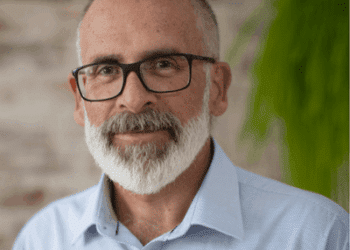Luckily, we don’t actually need to boil it down. We can find efficiencies, focus, and engagement in the other 3,936,272 components of epic financial advice.
But if we had to, we could really boil it down to those two. Goals and recommendations to achieve those exact goals.
But in between those two, sliced and slotted sideways so no-one could see it, is the communication of how the recommendations achieve the goals. In many ways, this is more important than anything else.
That’s the basis for advice being appropriate. Which is the basis for best interests duty. Which is the basis for … you get the point. It’s kind of everything.
That means the questions are:
- How do we make sure we get client goals out of client brains and onto client fact finds?
- How do we document the links between goals and recommendations?
As for the actual recommendations themselves, well, you already know how to do those. But this documentation piece can probably be improved.
The ethical principles that guide this are:
- Personal autonomy – that is, the client knows what is best for them, and it is our job to follow their directives.
- Standard 2 of the Code of Ethics: we need to know what the client wants to achieve in order to develop appropriate recommendations.
- Value of diligence: the advice process requires us to determine a client’s goals and to develop advice based on those goals.
- Let’s start with actually getting the client to know and then articulate what their goals are. We might be the first person to ever ask.
Here’s a broad set of open-ended questions in order to help clients to articulate their goals.
Stage 1: Establishing trust and comfort
Building rapport: “Can you share with me a story about a financial decision you’re really proud of?”
Setting the stage: “What does a fulfilling life look like to you? Feel free to describe it without any financial constraints in mind.”
Stage 2: Exploring values and priorities
Value exploration: “What are the top five values that you live by?
“How do these values influence your view on money and wealth?”
Lifestyle priorities: “Imagine your life 10 years from now, in a world where you have all the resources you need. What does a typical day look like?”
Stage 3: Visioning and dreaming big
Dream scenario: “If you received a financial windfall tomorrow, how would you use it to enhance your life or the lives of others?”
Legacy considerations: “What kind of legacy do you wish to leave behind financially?”
“What kind of legacy do you wish to leave behind in terms of personal impact?”
Stage 4: Defining goals beyond retirement
Beyond retirement: “Apart from retirement, what are three major financial milestones you wish to achieve in your lifetime?”
“Apart from retirement, what are three major experiences you wish to have in your lifetime?”
Achievement visualisation: “What does financial freedom mean to you?”
“How would achieving financial freedom change your daily life?”
Stage 5: Prioritising and specificity
Goal prioritisation: “Of the goals we’ve discussed, which ones feel most urgent or important to you? Why?”
Specificity and clarity: “What would achieving your most important goal look like?”
“How would you know you’ve achieved your most important goal?”
Stage 6: Overcoming barriers
Addressing concerns: “What do you see as the biggest obstacles to achieving these goals?”
“How might you overcome those obstacles?”
Support systems: “Who in your life supports your vision for the future?”
“How can they help you achieve your goals?”
Stage 7: Actionable steps
First steps: “What’s one small step you could take this week towards one of your goals?”
Long-term planning: “How can we structure your financial plan to support the inherent conflict between your short-term and long-term goals?”
Stage 8: Review and adjust
Feedback loop: “How often would you like to review these goals and the progress towards them?”
Flexibility and change: “How comfortable are you with adjusting these goals as your life changes?”
And as for the most important part, the documentation part, I would recommend:
- Recording the above conversation, both the audio of the meeting, and the transcript.
- Make a clear summary of the progress of your discussions. Cleary outline how you started broad to understand the client’s values, and you progressed more deeply to get specified achievable goals to work towards.
- Document the goals in the client’s language (and make sure they appear in the SOA as such).
- Define each goal in SMART terms.
- Document all the client’s goals, even those you’re not a direct part of. Make a separate section of goals for goals like spending more time with the kids, losing weight, getting promoted etc.
- In the advice document (aka SOA), spend as much time/space linking how each recommendation achieves which goals, as the actual advice.
- Communicate a client’s goals to them in the format they learn in, i.e. if your client is a visual learner, communicate visually. If they are an auditory learner, use lots of words. And if they are a kinaesthetic learner, perform an interpretive dance for them. That last one is a joke, Joyce.
This type of process helps us to:
- Support our client’s right to personal autonomy.
- Adhere to Standard 2 of the Code of Ethics.
- Provide advice which is in alignment with the value of diligence.
What other powerful questions would fit into this structure?
What other documentation tips do you have?
I’ve recently presented on this topic to the legendary advisers of Advice Evolution and I was blown away by their insights into this process, and ensuring ethics is at the front of mind. If you would like an ethics CPD session on this, I would love to hear from you.
Dr Katherine Hunt, researcher and speaker




Personally enjoyed the article, thank you
To me the key to understanding a client is asking them what is important to them now; next 3 to 6 months; next 6 to 18 months; medium term and then 5 yrs plus. This information helps you understand what is driving decision making.
Miles ahead, miiiiiiiiiiiiiles I tell you …
We should Support our client’s right to personal autonomy. This is why the Fed Govt should implement NSW Senator Andrew Bragg’s concept of permitting the client to transfer most of their compulsory super fund to their personal home mortgage offset account when buying a home, if they so desire. Some of our clients are tired of having $200,000 in their super fund, while being forced to live in a tent.
is it in their best interest?
and live of the taxpayer in their old age?